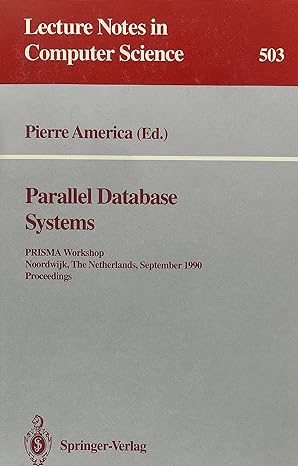IT 235 Milestone Two Guidelines and Rubric Overview: Database design is an integral step in the overall development of a database solution; a bad design
IT 235 Milestone Two Guidelines and Rubric Overview:
Database design is an integral step in the overall development of a database solution; a bad design can lead to many issues and problems with queries and potential expansion for any database. Getting the database design right is the first and most important step in creating a successful database. Prompt: In Milestone One, you read the final project scenario and then gathered the business requirements based on the goals, objectives, and user and business needs. For this milestone, you will frame the entity relationship model (ERM) and define the entities and attributes for the business. Your next steps will be to normalize your entities, define primary and foreign keys, and finally, draft an initial entity-relationship diagram (ERD). Specifically, the following critical elements must be addressed:
II. Conceptual Design: Using your analysis of the provided scenario, address the following in order to determine an appropriate entity relationship model (ERM) that will inform your final design: A. Assess various ERMs for their design applicability to your database design. Hint: In this section, define the process you have used, and note several considerations you have made in your choice of specific entities and attributes. Be sure to list the various entities and attributes that are of interest based on the scenario. Some entities and attributes may not ultimately be included in your initial or final design and ERD. B. Determine the appropriate ERM and explain your choice. Hint: Describe the appropriateness, reason, or basis for why certain entities and attributes would be included in your design and others would be left out. C. Identify the data sets for the database, including all entities and attributes.
III. Design Revision: During this stage, you will draft your entity-relationship diagram (ERD), addressing the following elements: A. Construct your ERD, utilizing your identified entities and attributes. B. Determine appropriate primary and foreign keys for each entity and note them on your ERD. C. Determine table relationships and note them on your ERD. D. Determine appropriate data types and sizes for each attribute and note them on your ERD. E. Complete the normalization process utilizing dependency diagrams in order to prove tables are in third normal form (3NF), and adjust your ERD if necessary. Hint: For each entity and table, complete dependency diagrams proving the table is in 3NF. If a table is in 3NF, only one diagram is needed; if it is not in 3NF, progress through the normalization process, breaking up tables as necessary. Additionally, revise your ERD based on the results of your normalization process.
Step by Step Solution
There are 3 Steps involved in it
Step: 1

See step-by-step solutions with expert insights and AI powered tools for academic success
Step: 2

Step: 3

Ace Your Homework with AI
Get the answers you need in no time with our AI-driven, step-by-step assistance
Get Started


